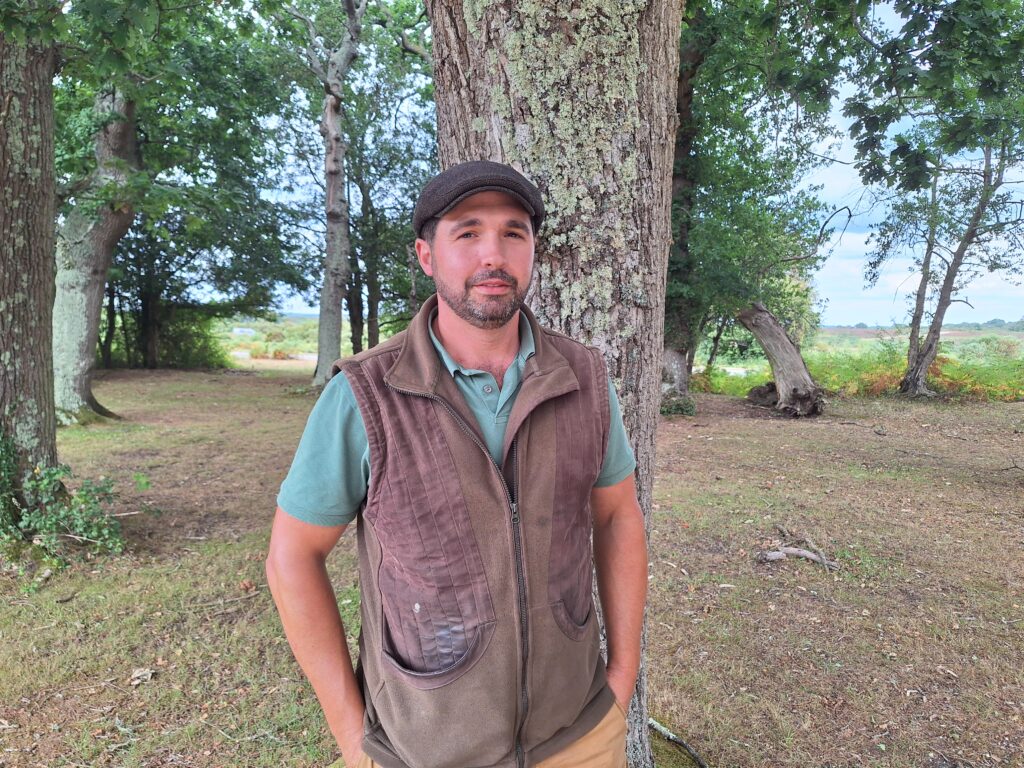Members of the public will have a chance to hear from three Young Commoners during a commoning themed walk in the New Forest.
It is all part of the New Forest Walking Festival – organised by the New Forest National Park Authority – which aims to bring people closer to the landscapes, wildlife and heritage that define the area.
The walk starts at 10am and is expected to finish at around 12pm on Friday, 31 October.
It will be led by Young Commoners Jake Moore, Tom Hordle and Daisy Slocombe and starts at Beaulieu Road car park (opposite Beaulieu Road train station).
The walk offers a chance to hear first-hand from those who continue the centuries-old way of life and helping to sustain the habitats, open heathlands and woodlands that make the New Forest so special.
Participants are advised to wear sturdy walking boots and dress for the outdoors. Free parking is available on site.
Tickets cost £5, while for U16s it is free.
Sign up for the walk on the Eventbrite page here
Limited tickets are remaining.
To see the other Walking Festival walks, head to the New Forest NPA website
Pictured above: Tom Hordle and Jake Moore lead a commoning walk earlier this year
We were delighted to welcome a film crew from BBC South Today earlier this week, who visited our chair Andrew Parry-Norton’s farm to report on the extension of this year’s Pannage season.
Due to an exceptional mast year – when oak and beech trees produce an abundance of acorns and nuts – the Verderers of the New Forest agreed to Pannage season being extended until Sunday, 4 January.
This allows the Commoners’ pigs more time to roam the Forest, foraging naturally and helping to reduce the number of acorns that can be harmful to ponies and cattle.
Andrew was joined by our vice-chair Keith Mansbridge and both were interviewed for the feature which went out on Wednesday night.
They both shared insights into the importance of Pannage for the health of the Forest and the welfare of the livestock that graze it.
The episode is no longer able to be viewed on BBC iPlayer (it expires after 24 hours) although you can read the piece which reporter Anjana Gadgil wrote here
Picture above: Keith Mansbridge and Andrew Parry-Norton being filmed. Credit: Sarah Parry-Norton
This year’s Pannage season has been extended.
It comes amid a glut of acorns on the floor of the New Forest due to it being a mast year.
It had been due to finish at the end of November, but Forestry England have agreed to extend the season until Sunday, 4 January.
Pannage is the traditional practice of turning out pigs by Commoners in the Forest to hoover up all the acorns, which can prove to be poisonous to ponies and cattle if they are consumed in large amounts.
Watch a short video on our Facebook page here about Pannage season.
Pannage season is well under way in the New Forest.
The annual practice sees pigs let out by Commoners to roam freely in woodlands (especially oak and beech forests) to forage for fallen acorns, beech nuts and other natural foods.
It helps protect ponies and cattle in the Forest as pigs can safely eat acorns, which are toxic to many other animals.
The season started on Monday, 15 September and is due to finish at the end of November, although that is to be confirmed as the New Forest CDA has asked Verderers for an extension due to the glut of acorns this year.
Pannage also helps maintain ecology in the Forest by controlling acorn numbers and turning over soil.
Members of the public should take note of the following advice surrounding Pannage season:
- Give the pigs space – do not try to feed, touch or approach them, especially if they have piglets
- Keep dogs on a lead near pigs or any other livestock. Even friendly dogs can startle pigs, which may respond defensively
- Do not feed pigs, ponies, cattle or donkeys as it is dangerous and against local bylaws. Human food can harm them and cause aggressive behaviour toward people
- Drive carefully – pigs often wander onto Forest roads and can appear suddenly, just like deer or ponies
Watch a short video on our Facebook page here about Pannage season.
Partnership is at the heart of caring for the New Forest. This summer, representatives from the New Forest Commoners’ Defence Association (CDA), Forestry England and Natural England have been coming together to review vital habitat management work.
From maintaining heathland to reducing wildfire risk, the organisations work side by side to protect what is regarded as one of the UK’s most treasured landscapes for wildlife, livestock and people alike.
Together, they start by assessing the lie of the land by looking at the condition of the heather, checking how the gorse is growing and identifying areas where pine and other vegetation are encroaching onto the heath before planning a work schedule.
It is more than a casual inspection; it’s part of an ongoing programme of habitat management designed to ensure the New Forest remains healthy for both wildlife and Commoners’ livestock.
‘Gorse and heather are vital for the animals,’ explains CDA vice chair Keith Mansbridge who also works for Forestry England. ‘If we manage them properly, they provide nutritious forage through the winter months when food is scarce. But if they’re left to get too old or overgrown, they lose their value. That’s why we use controlled burning, mulching, and clearance work to keep the cycle going.’
This work benefits not just the livestock, but the entire Forest ecosystem. Managing vegetation provides food, protects rare habitats and reduces the risk of devastating wildfires while a patchwork of different ages and types of growth is essential for the longevity of the Forest.
The partnership between the CDA, Forestry England, and Natural England is central to this effort. Each organisation brings expertise: Commoners know the needs of the animals and the traditions of the Forest; Forestry England provides the expertise and team to design and carry out large-scale management; and Natural England ensures that the work meets the highest standards of conservation.
‘It is very much a team effort,’ says Keith. ‘We all want the same thing – the Forest to thrive. Working together means we can balance the needs of wildlife, livestock, and the millions of people who come here to enjoy it.’
It is a never-ending process, with different types of work required throughout the year. Autumn is a key time for heathland and wetland management and restoration. Winter is the season for the cut and burn programme, when areas of heath are carefully treated to renew growth.
In other seasons, the focus shifts to surveys, habitat checks and planning the next cycle of work. Commoners also feed into the process by highlighting areas where management would make a difference for grazing or for drifting animals across the landscape.

New Forest CDA vice-chair Keith Mansbridge
For Keith, the message to the public is simple but important. ‘The New Forest is a working forest. It’s here for everyone’s enjoyment, but it also relies on careful management.
‘Everything is connected, from the livestock and the wildlife, to the people who live here and the visitors who love it, so we all have a role in looking after it.’
Despite the challenges of limited resources and the pressures of such a large and heavily visited landscape, Keith is proud of what has been achieved by each organisation.
‘Forestry England and Natural England do a fantastic job, and they listen to us as Commoners,’ he says. ‘Together we make sure the Forest is cared for, now and for the future. It isn’t easy, but we’re doing our very best and that is what the New Forest deserves.’
The New Forest CDA made two presentments this week during Verderers’ Court at King’s Hall in Lyndhurst.
The first concerned Pannage season, which started on Monday, September 15. The season is due to end on Friday, 28 November but the CDA has requested an extension to this due to the glut of acorns this year.
Chair Andrew Parry-Norton told the court: ‘This year is an exceptional year for acorns, a lot have fallen over the last couple of weeks.
‘The main crop of acorns is still to fall, [presenting] a serious risk to our cattle and ponies. We request that the Pannage season is extended until the New Year.’
The second presentment followed an incident which happened on the railway line near Sway, when a steer was hit by a train.
The CDA is calling on Verderers for support in pursuing the matter further with Network Rail.
‘As a matter of extreme urgency we ask the Verderers to join with us, the CDA, by putting pressure on Network Rail to admit liability for the Commoner’s steer and immediately replace the railway fencing throughout the Forest before any further stock and potentially people’s lives, are put at risk,’ the court heard.
Read the presentments in full below.
A major new development is being planned which could have a large impact on the New Forest and Commoners.
Solent Gateway has announced its proposals for Solent Gateway 2, an expansion of the port that would see the creation of a new automotive terminal, new marine facilities, improved road access and even a new country park.
Alongside these changes, the project promises environmental enhancements but it is also set to bring significant changes to the local landscape, traffic and the way nearby communities experience the Forest and Waterside.
By taking part in the consultation, Commoners have the chance to influence how the development progresses and ensure that traditional rights, environmental balance and community wellbeing are fully considered.
How to get involved
Solent Gateway is running a series of community drop-in events at the following venues where you can meet the team, ask questions and provide feedback.
- Marchwood Village Hall – Weds 24 Sept, 3–8pm
- City Cruise Terminal arrivals lounge (enter via Dock Gate 10 and follow signs for City Cruise Terminal), Southampton – Thurs 25 Sept, 10am–3pm
- Marchwood Village Hall – Fri 26 Sept, 3–8pm
- Hythe & Dibden Parish Hall – Tues 30 Sept, 3–8pm
- Hythe and Dibden Parish Hall – Fri 3 Oct, 3–8pm
- West Totton Community Centre – Sat 4 Oct, 2–5pm
For those who can’t attend in person, two webinars are being held at 6pm on Wednesday, 1 October and Wednesday, 8 October. Register for either session via the Solent Gateway 2 website
Ways to share your feedback
- In person: Hand in a feedback form at an event
- Online: Fill out a form here
- Email: contact@solentgateway2.co.uk
- Post: FREEPOST SGTWO (no stamp required)
You can also call 0800 138 9193 with any questions.
Shaping the future together
This is just the start of the consultation process, but it is a crucial stage. The input given now will shape how the proposals evolve and what protections or changes may be put in place for the Forest and its communities.
Commoners’ role in safeguarding the balance of the New Forest is unique and vital so it is crucial their voices are part of this conversation.
Please save the date!
The mid-term meeting for the New Forest Commoners’ Defence Association is being held at 7.30pm on Friday, 14th November at Bramshaw Village Hall (SO43 7JE).
The meeting is open to all New Forest Commoners and there will be cake, tea and coffee as well.
Speakers to be confirmed in due course.
Pig farmers in the New Forest are encouraged to attend an expert advice workshop with a local vet.
Alex Crook, from Pilgrims Vets in Fordingbridge, will be holding a question and answer session at Storm’s Farm in Cadnam on Tuesday, 9 September.
The event is primarily for New Forest Commoners who own pigs, but also those who have an interest in turning the animals out.
It is being funded by the Verderers of the New Forest Higher Level Stewardship scheme, which helps to support Commoning in the Forest through various initiatives, and is being run by the New Forest Land Advice Service.
The Service provides independent land management advice across the New Forest and Avon Valley and is a partnership of the NPA with Hampshire and Isle of Wight Wildlife Trust.
The workshop – which includes a free barbecue – runs from 1.30pm until 4pm.
Sign up for free on the Eventbrite page although places are limited
Pannage season – the practice of Commoners turning out pigs in the Forest – starts this month. The pigs forage for acorns, nuts and other food from the Forest floor.
Acorns can be poisonous to ponies and cattle if consumed in large amounts.
Looking for the perfect summer evening filled with live music, great food, and a warm community spirit? Then Folk on the Farm Festival is the place to be!
Enjoy an evening of folk tunes with country vibes, delicious food and plenty of fun at Storm’s Farm in Cadnam.
The event starts from 6.30pm on Saturday, 4 October.
The music line-up includes performances by Blacksmith, Itchen Privateers and DJ Billy Allen, while proceeds from the festival will go towards Brockenhurst Young Farmers and Hampshire and Isle of Wight Air Ambulance.
The event is sponsored by New Forest-based New Park Consultancy, which provides rural property advice across Hampshire, Wiltshire, Dorset and the Isle of Wight.
Tickets for Folk on the Farm Festival are just £10 per person, while it is free entry for under 16s.
For more information and to purchase tickets, head to the Folk on the Farm Festival Eventbrite page


Members Login
 Latest Tweets
Latest Tweets
Follow us
@realnewforest 4h
Icilibus sam quas aut eriatem nume corepta auta conet officaborem quodi corepta auta conet officaborem quodi apernat ectlpa dolorpiaecus.
@realnewforest 4h
Icilibus sam quas aut eriatem nume corepta auta conet officaborem quodi corepta auta conet officaborem quodi apernat ectlpa dolorpiaecus.
@realnewforest 4h
Icilibus sam quas aut eriatem nume corepta auta conet officaborem quodi corepta auta conet officaborem quodi apernat ectlpa dolorpiaecus.
With thanks for support from



